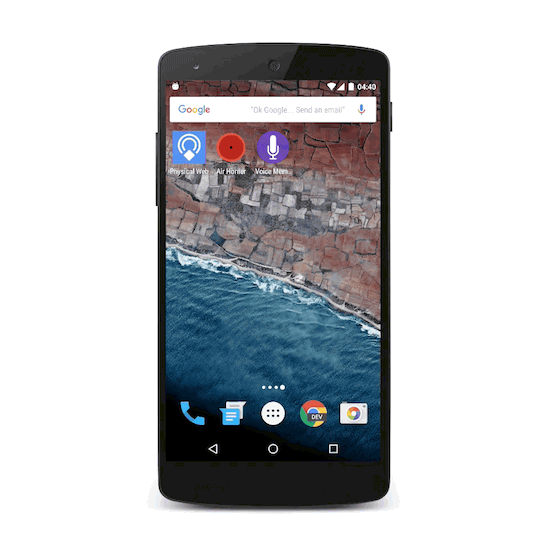More than a week after releasing the stable version of Chrome 46, Google released Chrome 47 beta for Windows, Mac, Linux, and Android. The company detailed the new features, which include support for cooperative multitasking, flexible desktop notifications, the usual security fixes, and splash screens for sites added to the Android home screen.
Chrome is arguably more than a browser: With over 1 billion users, it’s a major platform that web developers have to consider. In fact, with regular additions and changes, developers have to keep up to ensure they are taking advantage of everything available. Chrome 47 will include many new features worth looking over, especially if you’re a developer.
First up, developers can now explicitly set work to run during idle time using requestIdleCallback(). Functions registered with requestIdleCallback() are given a deadline and can return before that limit is reached, registering for another requestIdleCallback() to continue work during the next idle period.
In other words, developers no longer have to guess when performance-critical tasks like rendering will finish and use timers to schedule around them. Such estimates, of course, are never guaranteed, given that the time necessary to complete some events (like scrolling) simply cannot be predicted.
Chrome now allows developers to configure automatic dismissal of desktop notifications. Sites can set NotificationOptions.requireInteraction to indicate that the notification should remain onscreen until the user dismisses it. Google added push notifications in Chrome 42, and now, for sites that generate a large number of push notifications and take over your screen, it wants to clean up the experience.
Splash screens, when not abused, can allow apps to show something meaningful to users as the app loads, which in turn improves perceived performance. Chrome for Android brings splash screens to web apps when a site is launched from the Android home screen. The splash screen is shown immediately, even while Chrome itself is loading, and developers can customize it by setting a name, icon, background color, and notification bar color in the web app manifest. Once the web app begins to draw to the screen, the splash screen disappears.
Other developer additions include:
- Array.prototype.includes() simplifies the syntax for checking array membership.
- The rest parameters syntax allows functions with an indefinite number of arguments to be called using arrays.
- Cache.matchAll() simplifies bulk searching of the cache and removes the need for polyfills.
- RequestInit.referrer allows requests captured by service workers to match the original referrer.
- The new Navigator.MediaDevices interface allows developers to enumerate connected media devices such as audio output.
- Updated values for request properties in navigation FetchEvents offer improved spec compliance.
- MouseEvent.getModifierState() makes input processing more powerful and consistent across MouseEvent and KeyboardEvent.
- Developers can now more accurately detect input device capabilities using UIEvent.sourceCapabilities and InputDeviceCapabilities.firesTouchEvents.
- Several SVG methods have been removed, including pixel conversions and hasExtension() methods on several elements.
- Prefixed encrypted media extensions are now disabled in favor of unprefixed EMEs, which have more capabilities and conform to the spec.
- Chrome no longer highlights the gaps between content when painting selections.
- The notification center has been removed from Windows, Mac, and Linux to keep Chrome simpler.
Google releases new versions of Chrome every six weeks or so. We thus expect Chrome 47 (stable) to arrive by the end of November.
VentureBeat's mission is to be a digital town square for technical decision-makers to gain knowledge about transformative enterprise technology and transact. Learn More


